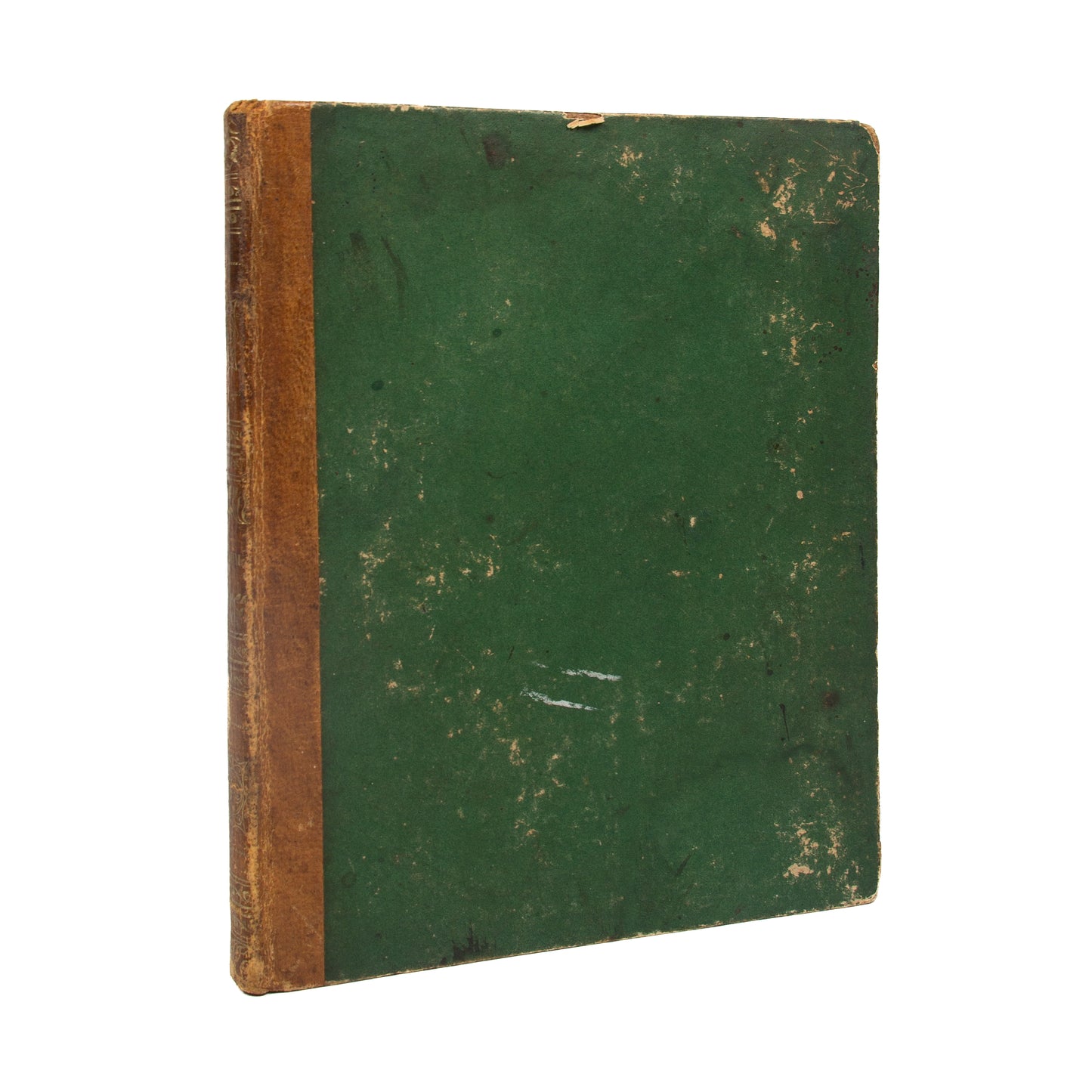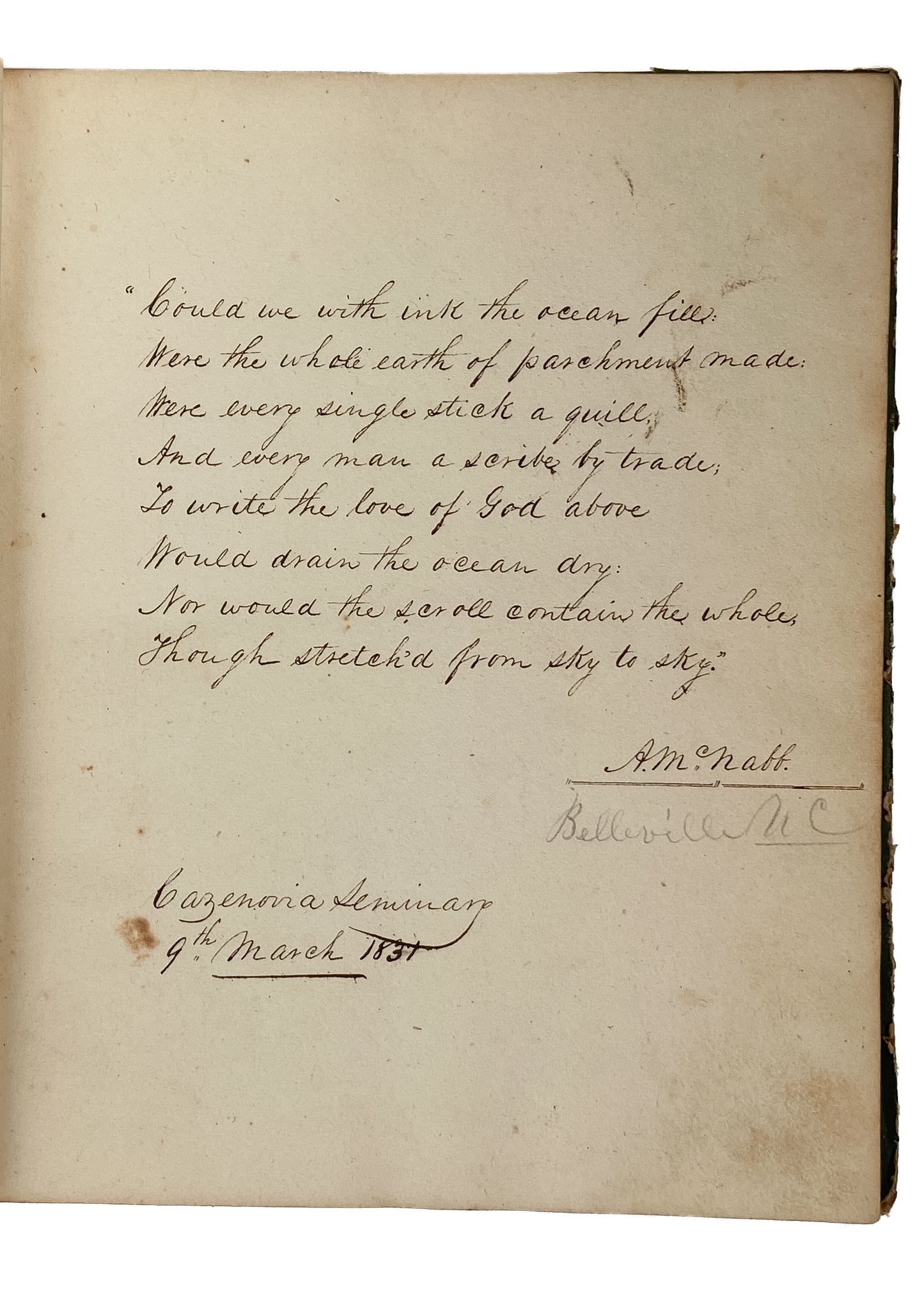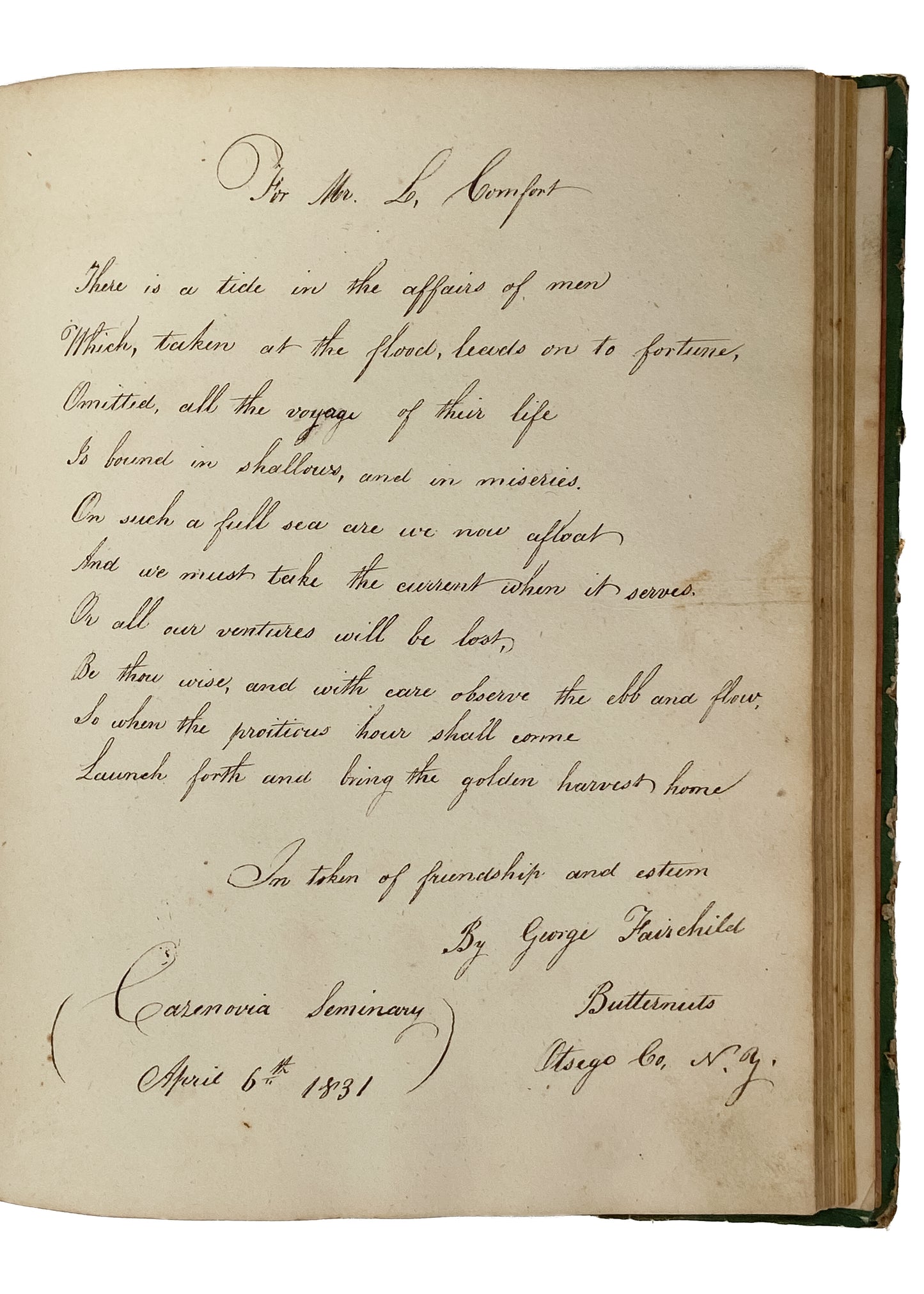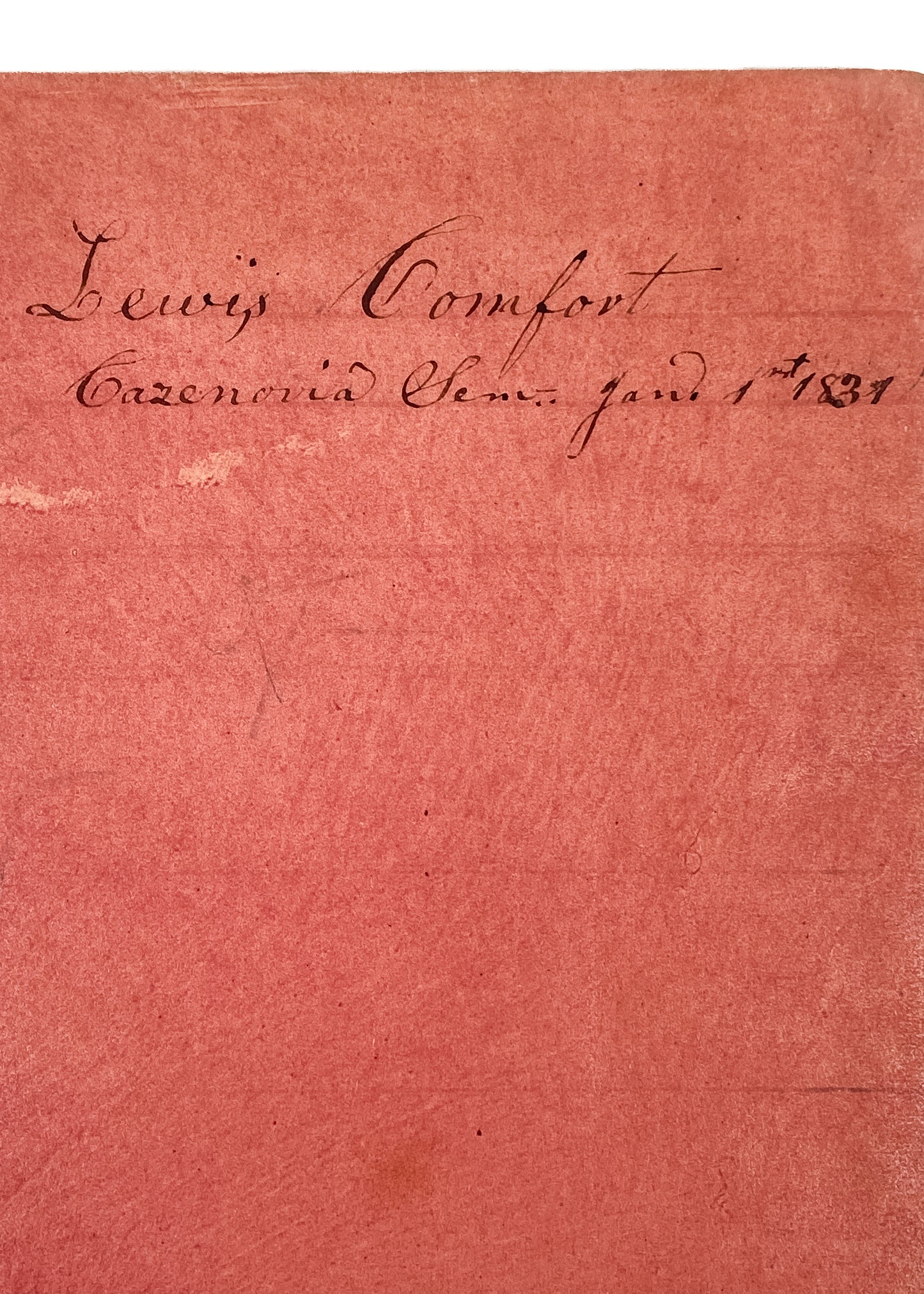Specs Fine Books
1831 CAZENOVIA SEMINARY. Early Methodist Journal Inscribed by Class of 1831 Graduates
1831 CAZENOVIA SEMINARY. Early Methodist Journal Inscribed by Class of 1831 Graduates
Couldn't load pickup availability
A fantastic little piece of Methodist history. The present autograph album belonged to [Isaaac] Lewis Comfort and was signed with select and original contributions by various professors and students attending Cazenovia Seminary between 1831 and 1833.
Cazenovia Seminary, formally known at the time as Genesee Seminary, was founded in 1824 and was only the second Methodist Seminary in America. Founded under the influence of influential Methodist, George Peck, it was co-educational from the beginning, and soon added a missionary program. Sophronia Farrington [class of 1828] was the first missionary graduate and established the very first foreign mission [Africa] outpost of the Methodist Episcopal Church.
The Seminary was graced with several periods of marked revival from 1828 through 1835, participating deeply in the Second Great Awakening. During the 1835 revival, it was said that every single student, to a person, had a profoundly impacting experience with Christ by the Spirit.
Lewis was the son of John Comfort Esq, influential among the Pennsylvania Methodists. Inscribing the journal was his sister, Mary Comfort, who later married Professor Jolly of the Seminary. Lewis also had a brother who attended, Silas Comfort, who went on to became a noted abolitionist in Saint Louis, MO and raised quite a trouble, good trouble that is, in the city when he allowed a black member of the church to bring testimony against a white member.
Inscriptions include:
*An 8-line early variant of "Could we with ink the ocean fill" signed by Alexander McNabb who later became a minister in Ontario, Canada, and then Principal of the Methodist School there, pastor at Belmont, etc.,
*A full 2-page original inscription by Professor Perlee Blake Wilber [1806-1859], later President of the Wesleyan Female College. He encourages his continued commitment to Scripture, to faithfulness, on the virtues of true friendship, etc.
*Inscription from Daniel A. Rexford of Sherbern, New York. Later known as a godly merchant and supporter of Methodist causes.
*Inscription of J. P. Brace of Winfield, New York [Class of 1831]
*14-line inscription by Daniel Gordon Dorrance [class of 1831], later the Honorable D. G. Dorrance. The famous lines on I Corinthians 13, There is a faith which shall not die, etc., was later a Senator for the State of New York, etc.,
*Inscription by Mary A. Rich of Penfield, If mortal hands by peace destroy by James Merrick. [Class of 1831]
*8-line inscription from Hugh Blair Jolly [class of 1831], later instructor at Cazenovia Seminary. From there he served as Principle of Vienna Academy, Red Creek Academy, and Jordan Academy.
*Fine original 10-line inscription on the blessings of Christian friendship by Edward Bannister, [Class of 1831], later Professor Edward Bannister at the Seminary. Then, in the 1840's he travelled west and served as a missionary with the Methodist church to California during the westward expansion and gold rush years.
*10-line inscription by George Fairchild [Class of 1831] of Butternuts, Otsego County, New York.
*12-line inscription of Northrup Durham of Verona [Class of 1831].
*9-line inscription by Daniel I. Baker of Genesee, Livingston County, New York, later a prominent lawyer in Brooklyn.
*4-line inscription by Jane Yates of Troy, New York.
*6-line inscription by his sister, later married to Hugh Jolly, Mary Comfort [Class of 1832]
*4-line inscription by the album owner, Mr. Isaac Lewis Comfort. He was later a teacher in Pennsylvania and then in Winfield, Kansas.
And a couple others. A really nice little piece of early American Methodist ephemera.
Share








